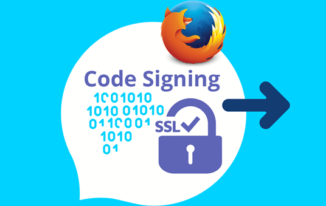Today, however, we download much of our apps directly from the internet and it is much harder to find the protections and promises that came from buying it in person from an actual physical store. In exchange, this has led customers to become even more cynical. After all, it’s hard to say if a genuine article is the programme or code you think you’re installing, or if it’s never been altered.
If you’re a programmer or software developer, however, there is always one way to guarantee your customers the integrity of your software/code. It’s called Code Signing and we’re going to be talking about that today.

What is Signing the Code?
As the name suggests, Code Signing is a way for programmers and developers to sign their scripts and executables practically before publishing them. Basically, signing the software/code serves two functions:
– It offers cryptographic security against code/software modifications.
– The code/software author is known.
We will begin to defend against change, which may be a bit of a misnomer. You see, you can always change a signed code technically. It’s not as if code signing establishes a challenging obstacle to some kind of change. After all, the code is malleable. It can be changed.
Instead, a digital signature is formed when a code signature happens. The signature shows both who signed the code and the real signature of the code. In other words, any modifications to the code will also cause the signature to change. In this case, it would automatically flag as having been tampered with when the code is executed and the machine running it checks the signature. The computer then warns the user that the programme might be dangerous, thus eliminating any future issues.
For many hackers, modifying downloadable code or software is a commonly used attack vector. But the modifications are noticeable to the machine running it when a code-signed downloadable is modified. This has to do with how to hash the signature. You see, in fact, a digital signature is not a signature at all, but rather a data string. It gives a particular value when the data is hashed, which tells the machine running it who signed the code, and what code was signed. Any adjustment to the code will cause the signature to give a different meaning, which will warn the machine running it instantly that something is wrong.
The other part of signing the code has to do with identification. Authentication is critical when it comes to software delivery, much as with SSL Certificates. People would like to know who developed the code they are downloading. Code Signing authenticates you as a developer by authorising you to sign your application.
This authentication constructs trust.There are two types of Certificates of Code Signing. There are organisational ones that authenticate an entire corporation, and individual ones that a single programmer can authenticate. Both require that you prove your identity and validity to the authority issuing the certificate.
In addition, when a prospective consumer sees your identity as accredited by a CA, they recognise that you have passed those requirements and they’re a source of confidence.
So, to quickly summarise, Code Signing Certificates protect the software’s credibility by notifying users if the code you have written has been compromised and no longer comes as you intended. And it authenticates you as an entity or individual programmer, in addition to preserving the credibility of the code, thereby inspiring trust from your potential customers.



